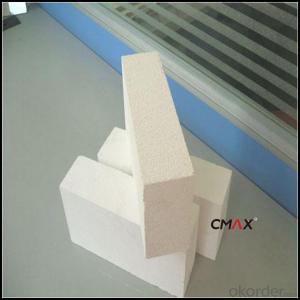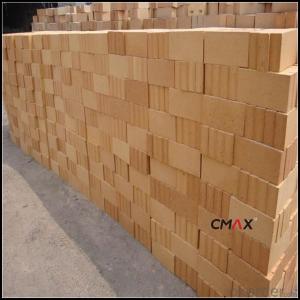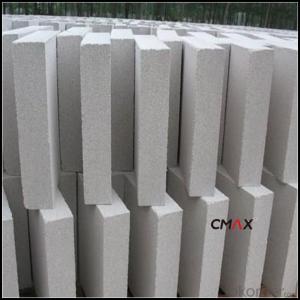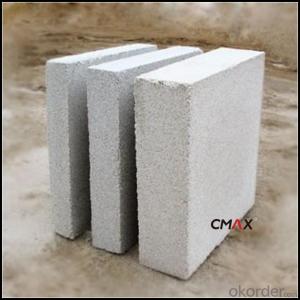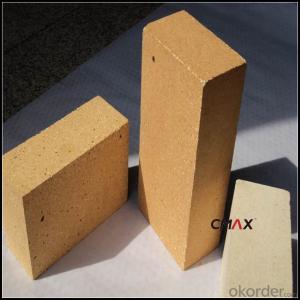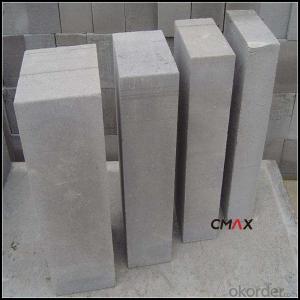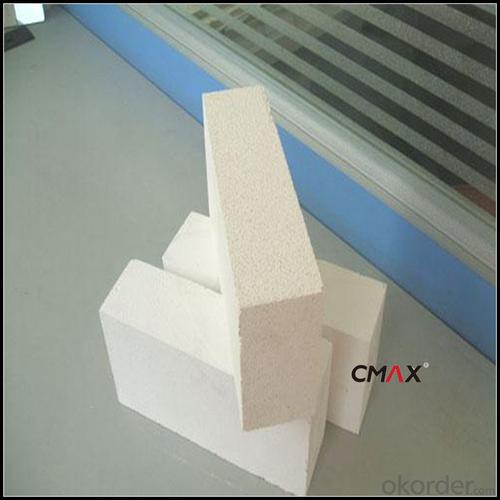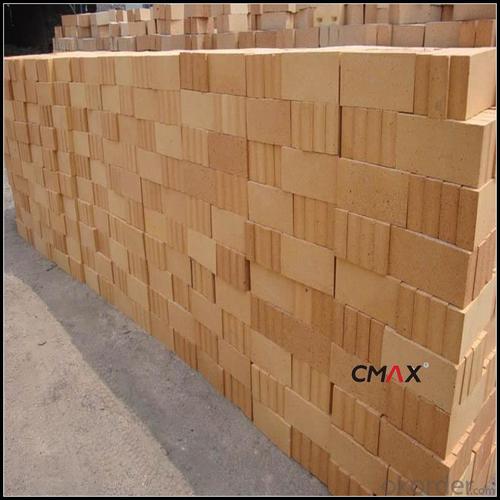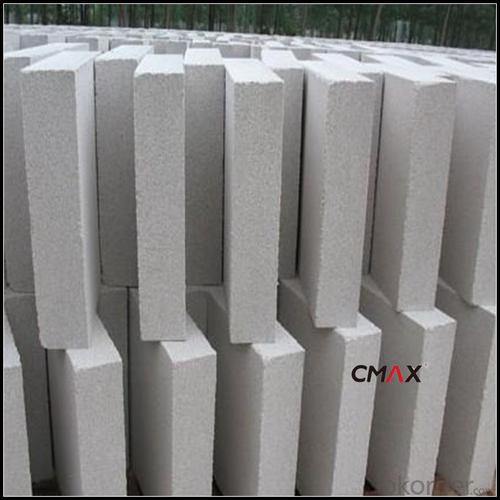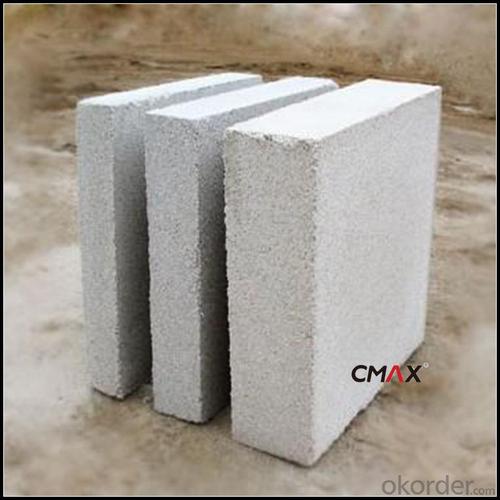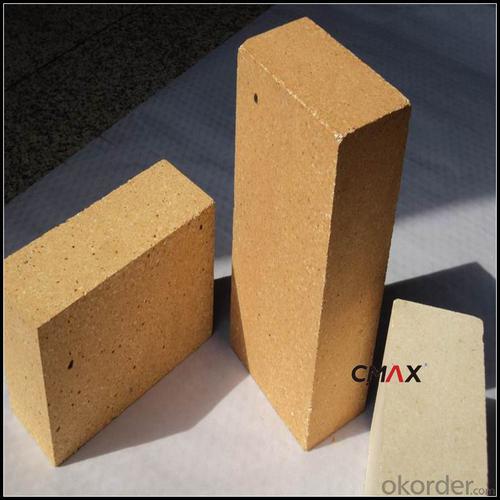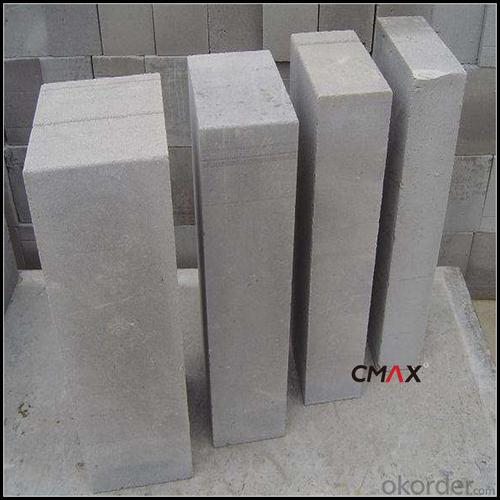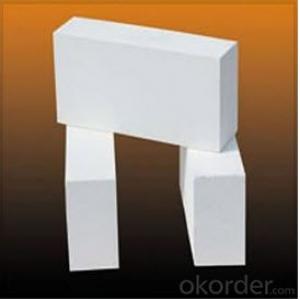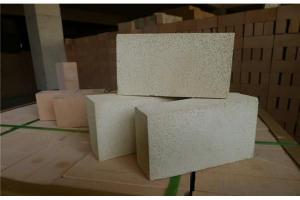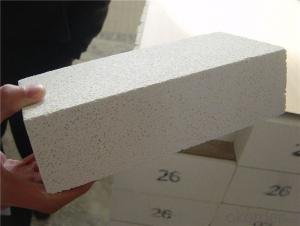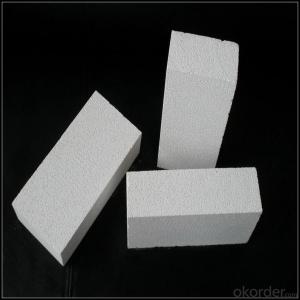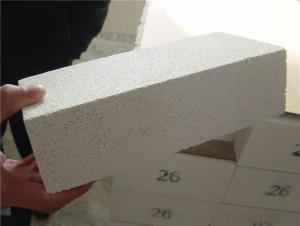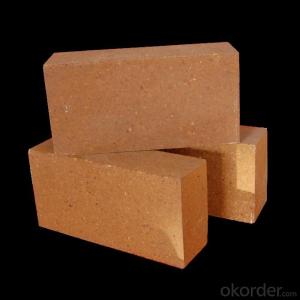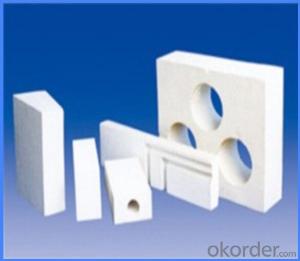Insulating Fire Brick for Standard Size Insulation Bricks
- Loading Port:
- China main port
- Payment Terms:
- TT OR LC
- Min Order Qty:
- 1 m.t
- Supply Capability:
- 2000 m.t/month
OKorder Service Pledge
OKorder Financial Service
You Might Also Like
Light Weight Insulating Brick
CMAX insulating firebricks are classified under temperature between 1300℃ to 1700℃, manufactured from high purity alumina clay.
The thermal insulation brick is a kind of insulation material adopting organic matter as ignition loss substance in order to increase the porosity of refractory, which has such advantages as high porosity, small volume density, good insulation effect, high mechanical intensity, small thermal conductivity and long service life. For various industrial kilns & furnaces, it is a kind of essential refractory for energy saving and temperature preservation.
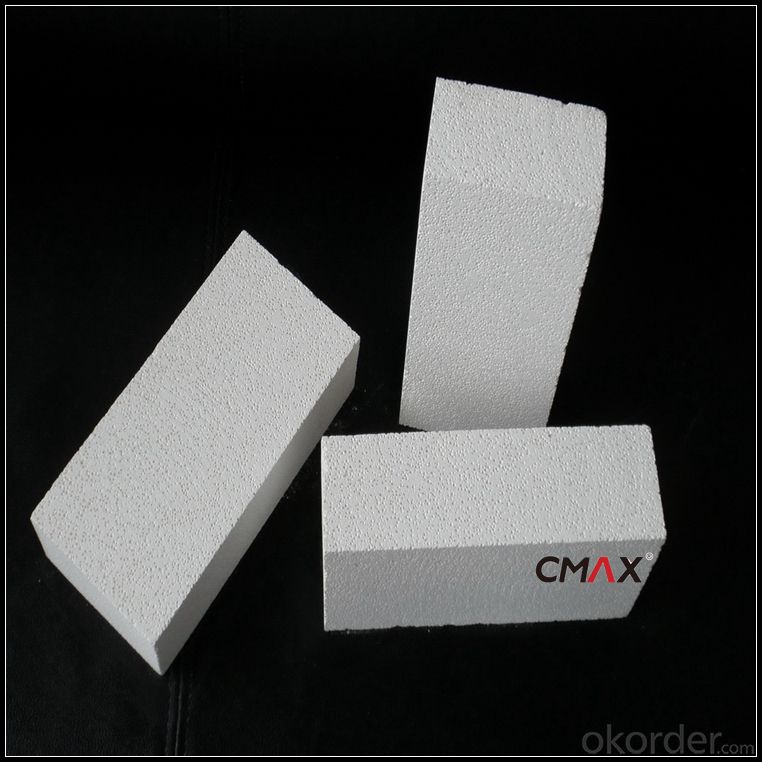
Light Weight Insulating Brick Features
1. Containing a large number of closed pores
2. Have a lightweight high temperature
3. Good insulation properties
4. Refiring small contraction
5. Excellent thermal shock resistance
6. Strong resistance to the corrosive gas and slag.
Light Weight Insulating Brick Application
The thermal insulation brick can be in direct contact with the flame, to apply to the cracking furnace, hot stove, furnace, tunnel kiln, push board kiln, crucible furnace and electric furnace, electric kilns lined widely used in metallurgy, refractories, light industry, chemical industry, ceramics, glass, electronics and other industries. Dimensions of the product, the physical and chemical indicators, service life have reached or exceeded the level of similar products at domestic and abroad.
Light Weight Insulating Brick Data Sheet
Classification Temperature (℉/℃) | 3000/1650 |
Bulk Density (g/cm3 ) | ≤1.0 |
Thermal Conductivity | |
800℃, W/m.K | ≤0.39 |
1000℃, W/m.K | ≤0.43 |
1200℃, W/m.K | ≤0.48 |
Reheating Linear Change (%) | 1550℃×12h |
≤0.9 | |
Chemical Composition (%) | |
Al2O3 | ≥75 |
Fe2O3 | ≤0.5 |
Packaging & Shipping
Packaging Details:Be packed in fumigated wooden pallets
Delivery Detail: 30 days after order

Our Services
Optimum solution and product supply of refractories for high temperature industries, such as iron steel, non-ferrous, petrochemical and building materials.
Engineering design, contract and consult for refractories, and civil architecture design.
Research, development, manufacture and sale of superhard materials.
R&D, manufacture and sale of special packing materials for export.
Inspection, supervision and arbitration of refractories.
Consultation and services in refractories information.
Training and cultivation of high-level talents in refractories profession
Sales Network

Company Information
CNBM (China National Building Material) Group is the largest comprehensive building materials group in China that in integrate scientific research, manufacturing and logistics into one entity. The largest building materials and equipment specialists in China. Upon State Council approval, today CNBM owned more than 300 subordinate manufacturing factories and servicing companies. There are 6 fully owned public listed companies and 11 partially owned with substantial shares public listed companies. In many of these fields, CNBM is playing the leading role in the building industry in the country.
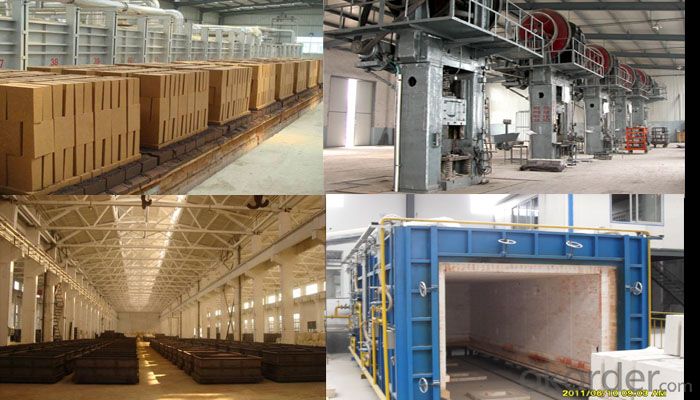
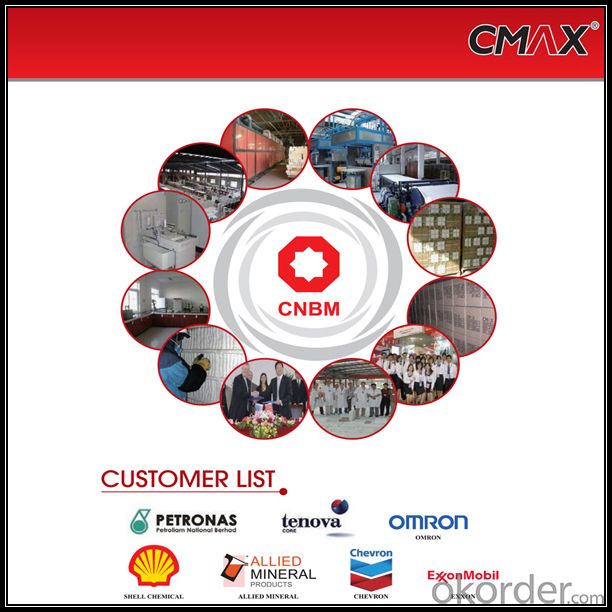
FAQ
1. Which products do you have?
We have all kinds of refractory brick, castable, mortar, cement, ceramic fiber products, etc.
Or you could browse our products to choose what you need.
2. Can you give me a brief introduction of the application of your products?
We are mainly specializing in the refractory materials in iron and steel, cement, glass, ceramics, petrochemical, electric power Industry, etc.
3. If I need your offer, what information do you need?
In order to choose suitable products, it will be appreciated to provide us the information, such us specification, technical data, order quantity, products application etc. If any question, please contact us freely.
- Q: Can insulating fire bricks be used for insulation in flues?
- Yes, insulating fire bricks can be used for insulation in flues. These bricks are designed to withstand high temperatures and provide excellent thermal insulation, making them suitable for lining and insulating flue systems. They help to prevent heat loss, improve energy efficiency, and enhance the overall performance of the flue.
- Q: How shall the sintered porous self insulation bricks be laid at the bottom of the beam?
- And the concrete column junction should be concrete columns of the tie bar are removed after straightening up in brick joints.
- Q: Are insulating fire bricks resistant to high-velocity gas flow erosion?
- Insulating fire bricks are generally capable of resisting erosion caused by high-velocity gas flow. These bricks are engineered to endure extreme temperatures and harsh conditions, including environments prone to erosion. They are crafted from top-notch refractory materials, like alumina and silica, renowned for their outstanding resistance to erosion and corrosion. Moreover, insulating fire bricks possess low thermal conductivity, aiding in minimizing heat loss and preserving their structural integrity even when subjected to high-velocity gas flow. Nonetheless, it is crucial to acknowledge that the precise level of resistance may differ depending on the unique composition and manufacturing techniques employed in creating the insulating fire bricks.
- Q: How to do indoor thermal insulation
- Basic decoration, can make indoor insulation work, such as some specific practices: when laid wood floor, the grille can be in the floor of the placement of insulation materials, such as mineral wool board, flame retardant foam etc.. In the custom doors, may require manufacturers with glass wool or mineral wool insulation materials etc.. To install windows and doors are sealed, if the window is the original single ordinary window glass, then the best decoration for hollow glass broken metal windows, can also use light decoration patent products: multifunctional solar heating refrigeration air conditioning doors and windows, doors and windows. Live in the top floor of the residents, but also in the ceiling when placed on the gypsum board insulation materials, in order to improve insulation. If the original wall has internal insulation layer, be careful not to destroy when decorating. If the design is to open the balcony and living room, it is necessary to install the insulation layer on the wall and top surface of the balcony.
- Q: What is the typical porosity of an insulating fire brick?
- The specific type and composition of an insulating fire brick influence its typical porosity, which can vary. Generally, insulating fire bricks have a porosity range of 40% to 70%. Porosity refers to the presence of open space or voids within the brick structure, which enhances its thermal insulation properties by minimizing heat transfer. The brick's insulation capability improves as its porosity increases. Manufacturers of insulating fire bricks typically target a specific porosity range to achieve the desired thermal conductivity and insulation efficiency.
- Q: What is the water absorption of insulating fire bricks?
- The water absorption of insulating fire bricks refers to the amount of water that the bricks can absorb when submerged or in contact with water. This property is an important factor to consider when using insulating fire bricks in applications that involve exposure to moisture or water. The water absorption of insulating fire bricks is typically quite low, with values ranging from 2% to 8% depending on the specific type and composition of the bricks. This low water absorption is due to the dense and compact structure of the bricks, which limits the penetration and absorption of water molecules into the material. The low water absorption of insulating fire bricks is beneficial in various applications. For instance, it helps to prevent moisture from seeping into the bricks and causing damage or degradation. It also ensures that the bricks do not retain excessive moisture, which could lead to increased weight, reduced insulation properties, or even the formation of cracks or fractures when exposed to high temperatures. By having a low water absorption, insulating fire bricks are able to maintain their structural integrity and insulation performance even in wet or humid environments. This makes them suitable for use in a wide range of industries and applications, such as kilns, furnaces, ovens, and other high-temperature processes where moisture resistance is crucial. Overall, the water absorption of insulating fire bricks is an important characteristic that contributes to their durability, thermal insulation properties, and resistance to moisture-related issues.
- Q: Can insulating fire bricks be used in the construction of ceramic fiber-lined kilns?
- Yes, insulating fire bricks can be used in the construction of ceramic fiber-lined kilns. Insulating fire bricks are designed to provide excellent insulation and can help increase the energy efficiency of the kiln. By using insulating fire bricks, the kiln can reach and maintain higher temperatures while minimizing heat loss through the walls.
- Q: Can insulating fire bricks be used in the construction of ceramic fiber kilns?
- Yes, insulating fire bricks can be used in the construction of ceramic fiber kilns. Insulating fire bricks are designed to provide thermal insulation and reduce heat loss in high-temperature applications. They have excellent insulating properties, with low thermal conductivity, which makes them ideal for use in kilns where high temperatures need to be maintained. By using insulating fire bricks in the construction of ceramic fiber kilns, it is possible to enhance the overall energy efficiency of the kiln and improve its performance. However, it is important to ensure that the insulating fire bricks are compatible with the specific requirements and operating conditions of the ceramic fiber kiln to ensure optimal results.
- Q: Are insulating fire bricks resistant to high-velocity gases?
- Yes, insulating fire bricks are resistant to high-velocity gases. These bricks are specifically designed to withstand extreme temperatures and are often used in applications where high-velocity gases are present, such as in furnaces and kilns. Their dense and non-porous structure helps to prevent gas penetration, making them an ideal choice for insulation in such environments.
- Q: Do insulating fire bricks have a low thermal conductivity?
- Insulating fire bricks possess a low thermal conductivity, rendering them ideal for applications necessitating thermal insulation. These bricks are specially crafted to minimize heat transfer. In comparison to traditional fire bricks, insulating fire bricks exhibit lower density and higher porosity, thus aiding in diminishing heat flow through conduction. With their low thermal conductivity, these bricks function as efficient barriers against heat transfer, ensuring cooler surrounding regions and heightened energy efficiency.
Send your message to us
Insulating Fire Brick for Standard Size Insulation Bricks
- Loading Port:
- China main port
- Payment Terms:
- TT OR LC
- Min Order Qty:
- 1 m.t
- Supply Capability:
- 2000 m.t/month
OKorder Service Pledge
OKorder Financial Service
Similar products
Hot products
Hot Searches
Related keywords
